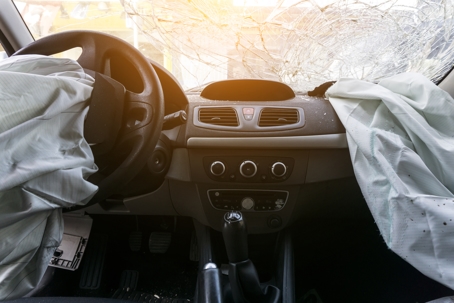Getting injured in a car accident is a stressful and overwhelming experience. But things can become even more complicated when the at-fault driver doesn’t have insurance. It’s natural to wonder how you’ll cover medical bills, lost wages, and other expenses. The good news? You may still have options to secure fair compensation for your injuries.
Understanding your rights and the steps to take after being injured by an uninsured driver is crucial to protecting yourself financially.
Step 1: Check Your Own Insurance Policy
If the at-fault driver lacks insurance, your policy may provide coverage. Uninsured motorist (UM) insurance is specifically designed for situations like this. It helps cover medical bills, lost wages, and even pain and suffering when the other driver can’t compensate you.
Here’s what you should check within your policy:
- Uninsured Motorist Coverage (UM): This coverage pays for damages caused by a driver with no insurance. It typically includes medical expenses and, depending on your policy, may also cover property damage.
- Medical Payments (MedPay) or Personal Injury Protection (PIP): Both types of coverage can help pay for medical bills regardless of who caused the accident.
- Collision Coverage: For property damage to your vehicle, collision coverage may apply if you're injured in an accident with an uninsured driver.
If you’re unsure whether you have this coverage or how it applies, review your policy or contact your insurance provider. Working with an attorney who can help you maximize your benefits is also a good idea.
Step 2: Gather Evidence and Document Everything
Building a strong case begins at the scene of the accident. Even though the at-fault driver doesn’t have insurance, the evidence you collect will be crucial for both your insurance claim and any potential legal action.
Make sure to:
- Call the Police: Always file a police report. This official document is essential for proving fault and creating a record of the uninsured driver’s actions.
- Collect Driver Information: Get the uninsured driver’s name, contact information, and vehicle details. These details are necessary for any future legal or insurance claims, even without insurance.
- Take Photos: Document the accident scene, vehicle damage, and your injuries with clear pictures.
- Record Witness Contact Info: If there are any witnesses, their statements can strengthen your case.
Proactive documentation is your best defense against challenges in resolving uninsured driver accidents.
Step 3: Consider Legal Options
If the uninsured driver’s negligence caused your injuries, it may be possible to pursue legal action. While not every uninsured driver has the assets to pay a settlement or court award, an experienced attorney can assess whether this is a viable option.
Key legal paths to explore include:
- Filing a Personal Injury Lawsuit: If the at-fault driver has personal assets, a lawsuit can help you recover compensation for medical bills, lost wages, pain and suffering, and other damages.
- Exploring Third-Party Liability: Depending on the circumstances of the accident, a third party may share responsibility. For example, if the accident occurred due to poor road maintenance or a defective vehicle part, you could have grounds to file a claim against the responsible party.
Keep in mind that state laws and limitations regarding uninsured drivers vary. Consulting with a personal injury attorney ensures you explore all your legal options while protecting your rights.
Step 4: Tap Into Other Potential Compensation Sources
Besides your own insurance and legal options, there may be additional routes to recover compensation, such as:
- Employer Policies: If you were driving a company vehicle or on the job during an accident, your employer’s insurance policy might cover the damages.
- State Compensation Funds: Some states have programs to assist victims injured by uninsured or underinsured drivers. These funds often pay for medical expenses and other financial losses.
- Umbrella Insurance Policies: If you have an umbrella insurance policy, it may include coverage for uninsured motorist incidents, extending the compensation beyond your auto insurance limits.
Exploring these additional resources with the help of a lawyer can make a significant difference in your recovery.
Step 5: Protect Yourself for the Future
Being hit by an uninsured driver is a tough lesson, but you can use it as an opportunity to better protect yourself in the future. Here are some proactive steps to take:
- Purchase or Increase Uninsured Motorist Coverage: If you don’t already have this coverage, adding it to your policy provides valuable protection.
- Review Your Insurance Limits: Ensure your policy limits are high enough to cover serious accidents.
- Drive Defensively: While some accidents are unavoidable, staying vigilant on the road can help reduce your risk of future collisions with uninsured drivers.
Investing in comprehensive insurance coverage and practicing safe driving habits gives you peace of mind, knowing you're prepared for any unexpected situation.
Car Accident Attorneys
In conclusion, dealing with the aftermath of an accident with an uninsured driver can be daunting, but understanding your options and taking proactive measures can make a significant difference. At Bishop & Hayes P.C., we are committed to helping residents of Springfield, Missouri, navigate these complex situations with expert legal guidance. If you've been involved in an accident with an uninsured driver, don't hesitate to reach out to us for a consultation. Our experienced team is here to support you every step of the way, ensuring you receive the compensation and protection you deserve. Contact us today at (417) 304-3228 to learn more about how we can assist you in your journey to recovery.

